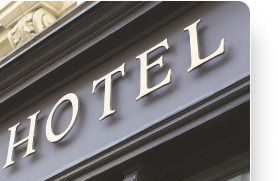Determining optimal pricing for hotel rooms is a critical factor in increasing revenue and ensuring profitability. A multifaceted approach to hotel room pricing involves considering various factors, utilizing data analytics, and employing revenue management tools. The ultimate goal is to set rates that reflect guests’ willingness to pay while maintaining high occupancy rates. Let’s explore some of the key factors that influence a hotel’s pricing strategy.
Competitive pricing. To stay competitive, it is critical to understand and track competitors’ pricing strategies using specific tools. Setting prices relative to similar offerings in the area ensures competitiveness and attracts potential guests.
Flexible cancellation policies. In response to evolving guest preferences, offering flexible cancellation policies has become essential. Guests are often willing to pay a premium for the peace of mind of being able to cancel without stress, making this strategy an essential element of hotel pricing. With Seekda, you can enjoy complete flexibility by tailoring cancellation policies to each rate plan and customizing them based on your guests’ dates of stay.
Guest Segmentation. Similar to airline practices, a guest segmentation strategy involves charging different prices based on factors such as volume, preferences and service offerings. Tailoring pricing to specific guest types optimizes revenue by offering differentiated value propositions.
Length-of-stay incentives. Encouraging longer stays by offering discounted rates for multiple nights can increase overall revenue. Strategies such as Smart Pricing enable targeted pricing based on different guest segments, including those who stay longer. With Seekda’s easy-to-use system, offering daily rates based on your guests’ length of stay becomes effortless.
Forecast future demand. Forecasting is essential to revenue management because it relies on analyzing historical data and understanding trends. Pricing strategies should be aligned with expected demand, taking into account factors such as occupancy rates, revenue trends, and historical data.
Occupancy-based pricing. Adjusting room rates based on occupancy is a common and effective strategy. Raising rates during periods of high demand and offering lower rates to increase occupancy during off-peak periods helps optimize revenue.
Loyalty-based incentives. Building customer loyalty through incentive-based pricing, including discounts and promotions, can encourage repeat business. Implementing promo and discount codes with Seekda encourages direct bookings and reinforces the value of loyalty.
Upsell and packages. Encouraging guests to spend more by upselling additional services and offering bundled packages are effective revenue-generating strategies. Offering options to upgrade rooms or include services at the time of booking enhances the overall guest experience and helps increase revenue per booking.
Incorporating these key factors into a comprehensive hotel pricing strategy is essential to maximizing revenue and ensuring sustainable profitability. A dynamic approach that takes into account market dynamics, guest preferences and emerging trends is critical in the ever-evolving hospitality industry.




















